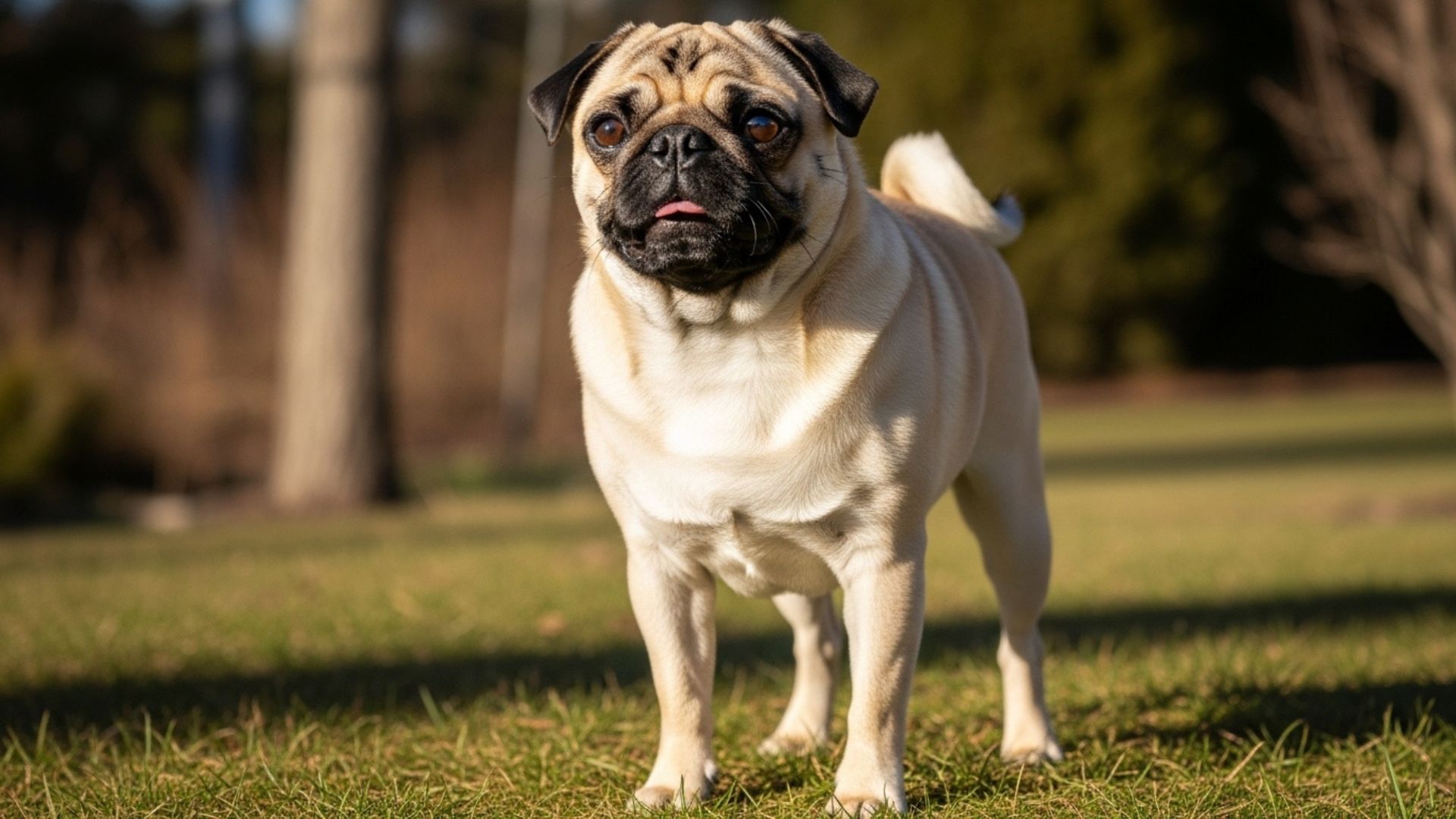Have you ever wondered why some dogs seem to sniff out everything, from the cookie you hid in the cupboard to the squirrel three streets away? A dog’s nose is more than a cute feature; it’s a remarkable piece of natural design.
Across different breeds, the shape of the nose can reveal a lot about their abilities, history, and even their personalities. Some breeds boast long, elegant muzzles built for tracking scents over huge distances, while others have charming, squishy noses that make them instantly lovable.
Exploring these unique nose shapes gives us a fresh way to appreciate the diversity in the dog world and understand how form connects to function.
Whether you’re a dog enthusiast, a curious reader, or someone searching for your next furry companion, discovering the stories behind these noses adds a new layer of fascination to our bond with dogs.
Dog Breeds That Have Wonderful Nose Shapes
1. Pug
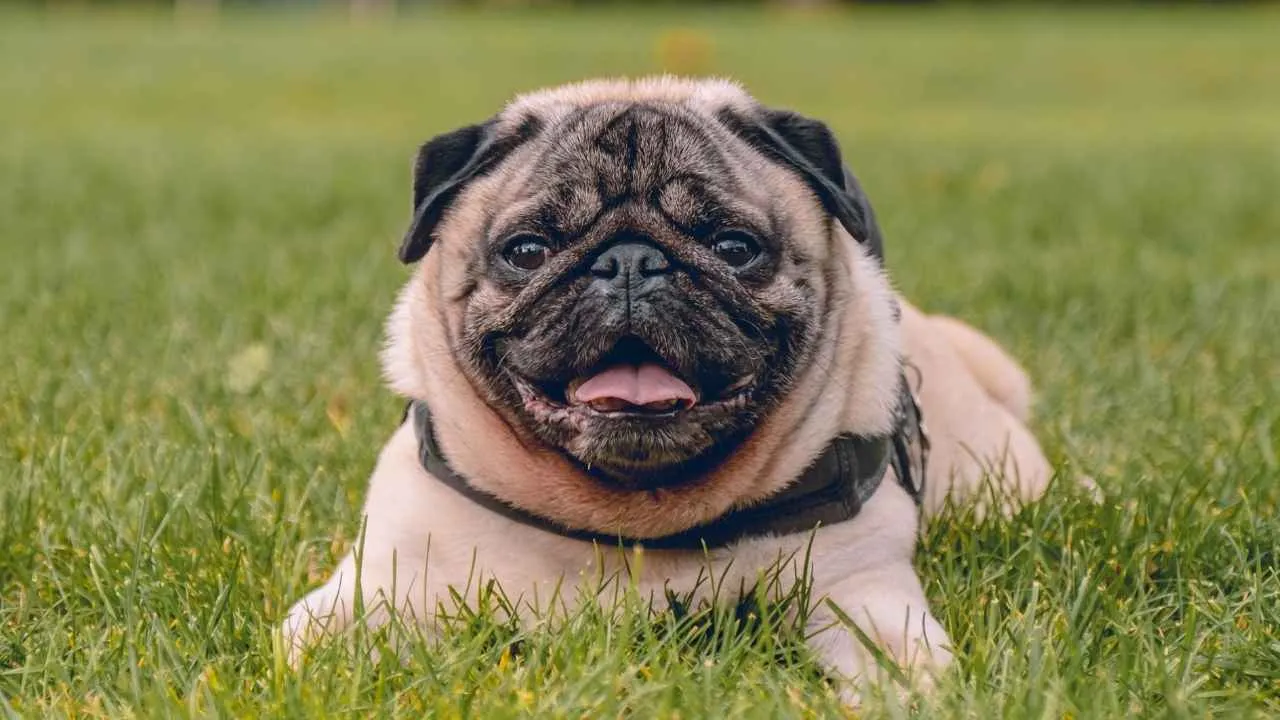
The Pug is a small, sturdy companion dog known for its round head, large eyes, and charming wrinkles. Its history dates back to ancient China, where it was treasured by royal households. That early association with nobility helped shape the breed’s confident and affectionate personality.
Many people love the Pug for its friendly nature, as it tends to bond easily with people of all ages. They are comfortable in homes of many sizes, from apartments to larger houses. Their social, curious disposition makes them natural family companions.

The breed’s short muzzle places it among brachycephalic dogs, meaning it can be more sensitive to heat and heavy exercise. Warm environments or humid weather can make breathing a little harder for them. Owners often find that moderate activity and cool indoor spaces suit Pugs best.
Physically, Pugs are compact but surprisingly muscular for their size. Their curled tail and fawn or black coat give them a classic, instantly recognizable silhouette. Their expressive features often make them appear almost human in their reactions.
Pugs are known for their cheerful, even-tempered demeanor. They enjoy being included in daily routines and often thrive when they feel part of the household action. Their adaptability and approachable personality have helped them remain popular worldwide.
Fun Fact
The Pug’s folded forehead wrinkles were once considered lucky markings and were highly prized in early breeding.
2. French Bulldog

The French Bulldog is a compact companion breed best known for its bat-like ears and sturdy frame. It originated when small Bulldogs from England were crossed with local dogs in France, creating a lively and affectionate companion. That combination helped shape the breed’s playful and people-oriented personality.
French Bulldogs are well-loved for their calm, steady nature. According to Hill’s Pet, they enjoy living close to their owners and typically adapt very easily to apartment living. Their gentle personality makes them suitable for many types of families, including first-time dog owners.

As a brachycephalic breed, the French Bulldog has a short muzzle that requires careful attention to breathing and heat exposure. Hot weather or heavy activity can be uncomfortable for them. Most Frenchies do best with short walks and controlled outdoor time.
Their strong, compact build gives them a sturdy appearance despite their small size. They carry themselves with a confident, almost comical charm that many owners find irresistible. Their minimal grooming needs also add to their appeal as low-maintenance pets.
French Bulldogs form strong bonds with people and often prefer companionship over independence. They enjoy relaxed daily routines with plenty of interaction. Their combination of personality, size, and charm has made them one of the most popular breeds globally.
Fun Fact
Early breeders debated ear shape, but American enthusiasts ultimately helped establish the French Bulldog’s trademark bat ears as the official standard.
3. Shih Tzu

The Shih Tzu is a small companion dog known for its long, flowing coat and bright, confident personality. Its name translates to “lion dog,” reflecting its roots in ancient Chinese palaces. This royal background helped shape their affectionate and people-focused temperament.
As per PDSA, Shih Tzus often enjoy spending time near their owners and tend to follow family members from room to room. Their exercise needs are modest, making them well-suited to apartment living. Many owners appreciate how easily they integrate into the household.
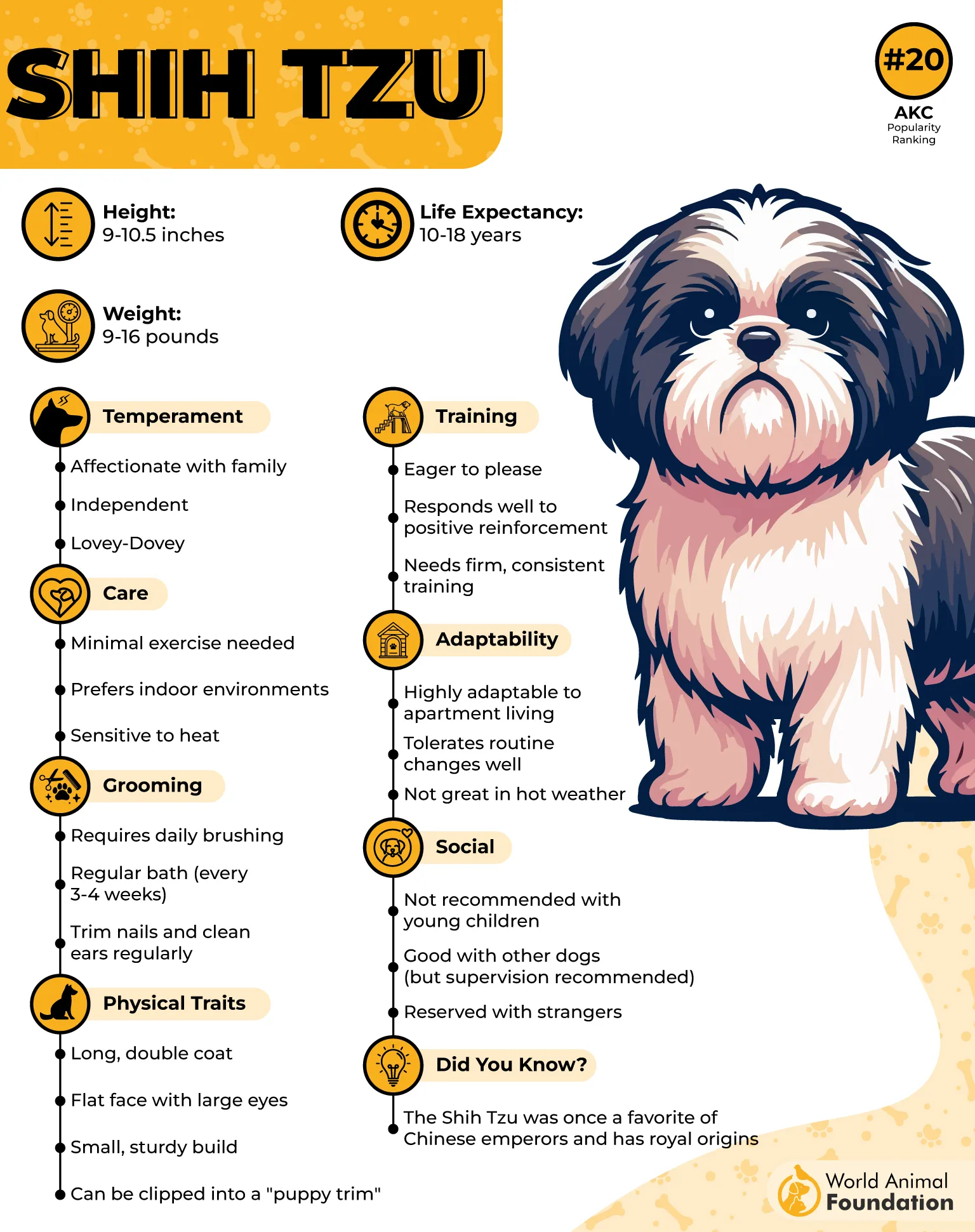
Their short muzzle places them within the group of brachycephalic dogs, which means they can be sensitive to heat or strenuous activity. Gentle, controlled walks usually suit them well. Keeping them comfortable in warm weather is especially important.
One of the breed’s standout features is its luxurious coat, which can grow quite long without regular grooming. Frequent brushing helps keep the coat in good condition and prevents matting. Owners who prefer lower maintenance often keep the coat clipped shorter.
In personality, Shih Tzus are cheerful and enjoy social interaction with people of all ages. They are naturally friendly and are generally accepting of new experiences when introduced gradually. Their pleasant nature makes them a favourite among many families.
Fun Fact
The Shih Tzu’s face hair often grows outward in all directions, giving it a rounded appearance that inspired the nickname “chrysanthemum-faced dog.”
4. Boston Terrier
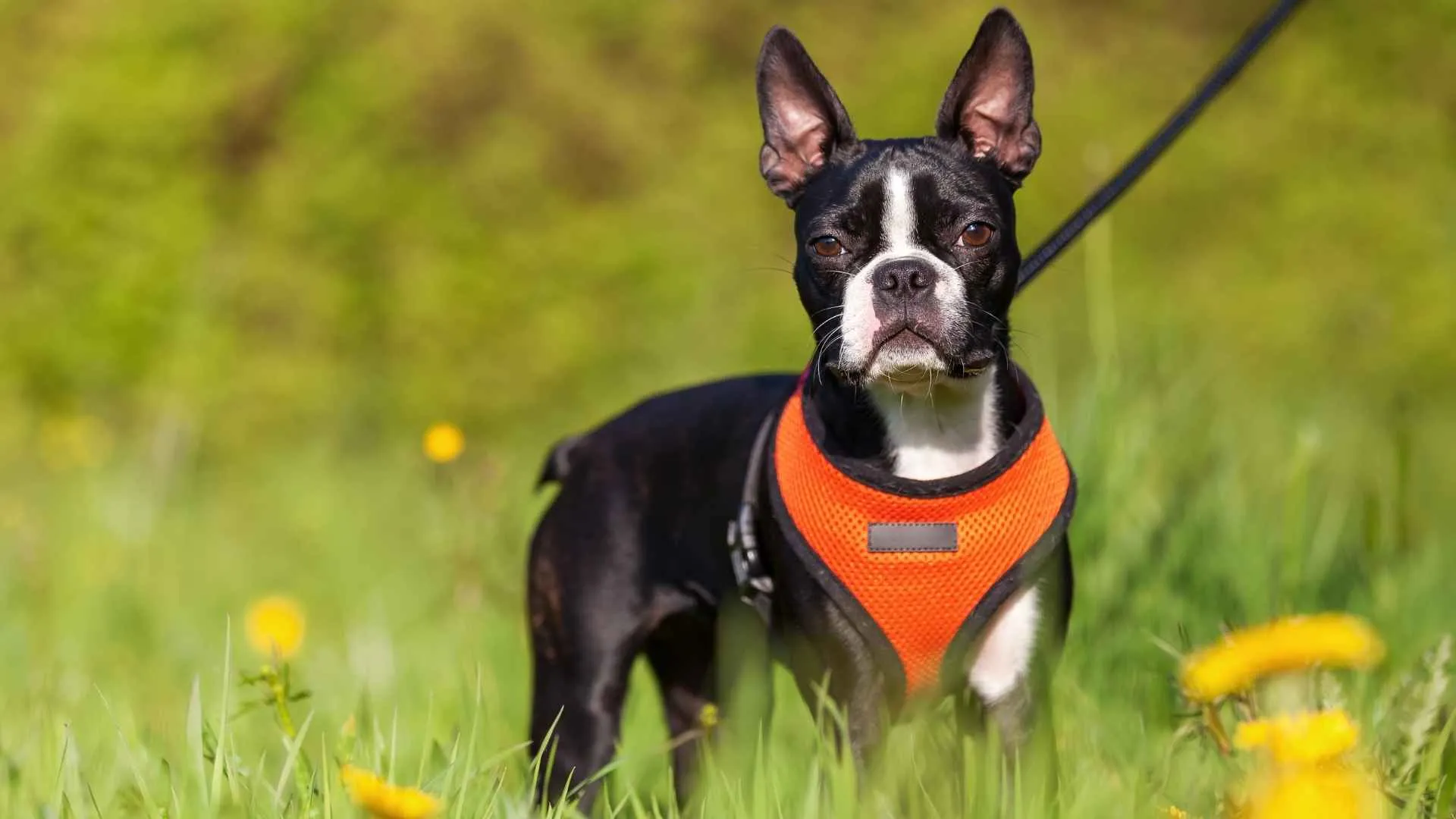
The Boston Terrier is a lively, friendly companion known for its tuxedo-like markings and bright expression. Developed in Boston in the late 1800s, the breed originally descended from Bulldog and terrier-type dogs. Over time, breeders refined it into the gentle companion we know today.
Boston Terriers enjoy spending time with people and usually welcome attention with enthusiasm. They tend to get along well with families, including children. Their playful nature adds charm to everyday routines.

Like many short-faced breeds, Boston Terriers can experience breathing challenges in hot or humid weather, as noted by PetMD. They usually do best with moderate activity and comfortable climate conditions. Tailored exercise helps them stay active while avoiding stress.
Their alert expression and compact frame give them a polished, well-balanced look. Smooth coats make grooming simple and manageable. Boston Terriers are often easy keepers in smaller homes or city environments.
The breed is known for being smart and responsive. They generally enjoy training sessions when kept fun and positive. Their personality, size, and adaptability make them appealing companions for many different lifestyles.
Fun Fact
The breed’s signature black-and-white coat inspired the popular nickname “American Gentleman.”
5. Brussels Griffon

The Brussels Griffon is a small companion breed with an expressive face and a lively personality. Originating in Brussels, it was first used as a stable ratter before becoming a cherished companion. Its spirited nature and alert expression make it stand out among small breeds.
According to WebMD, these dogs form strong bonds with their owners and thrive on close contact. They often prefer to be part of the action rather than alone. Their affectionate nature makes them well-suited to people who enjoy constant companionship.

The breed has a short muzzle that places it within the brachycephalic group. This means careful attention to heat and strenuous activity helps keep them comfortable. Gentle routines usually suit them best.
Brussels Griffons can have either a smooth or rough coat, both of which give them a distinctive appearance. Their large eyes and expressive features contribute to their almost human-like look. Regular grooming helps maintain their unique facial characteristics.
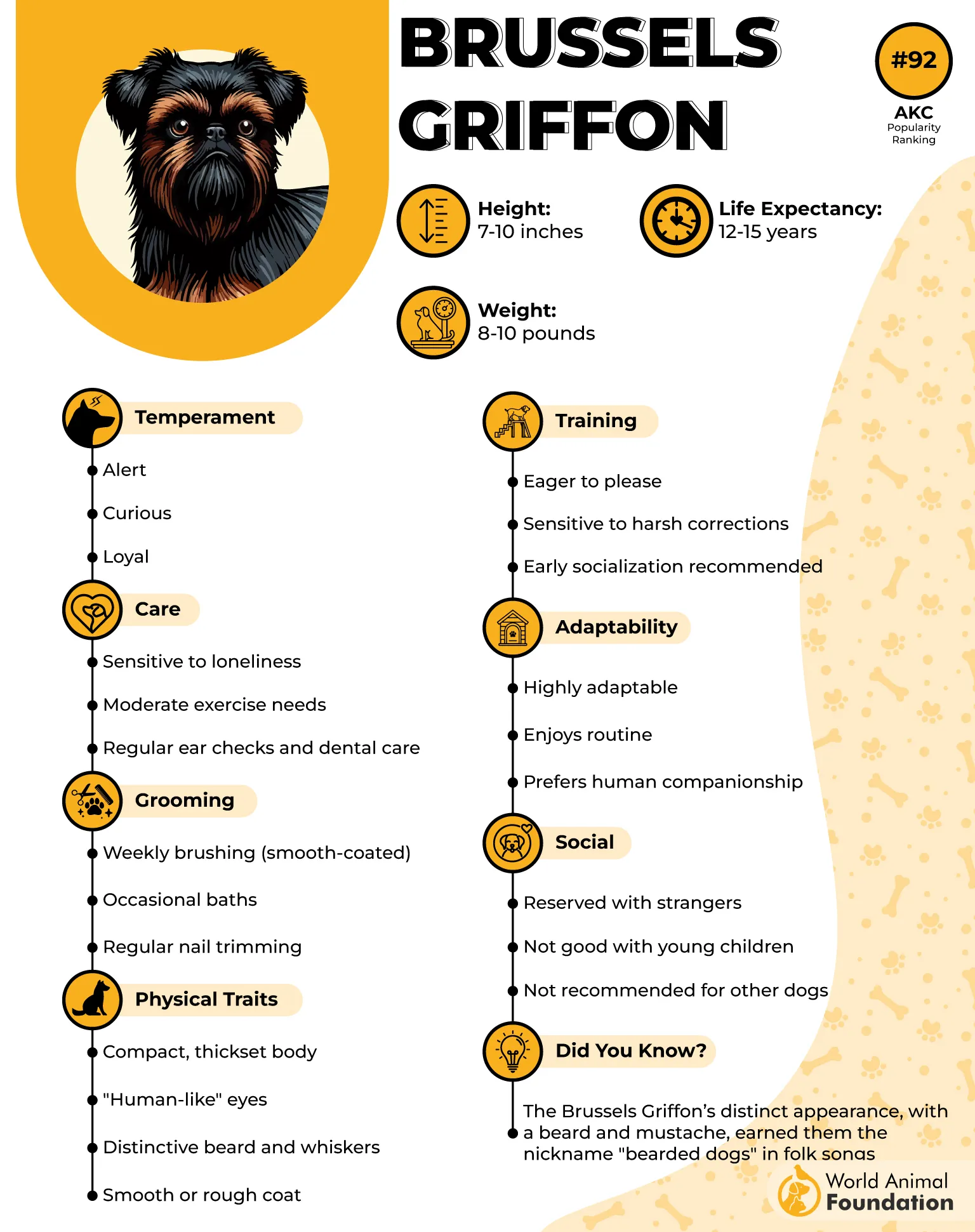
Personality-wise, they are bright and often full of character. They respond well to gentle, patient training and enjoy mental engagement. Their bold attitude and small size create a fun mix for owners who appreciate spirited dogs.
Fun Fact
A Brussels Griffon gained fame for its role in the film As Good as It Gets, drawing renewed attention to the breed.
6. Greyhound

The Greyhound is known for its sleek body, long legs, and aerodynamic head. Its narrow, elongated muzzle helps it channel air efficiently while running. This design has contributed to its reputation as one of the fastest dog breeds in the world.
Despite their athletic ability, Greyhounds are surprisingly calm at home. They often enjoy long naps and quiet environments. Many people describe them as gentle, polite companions.
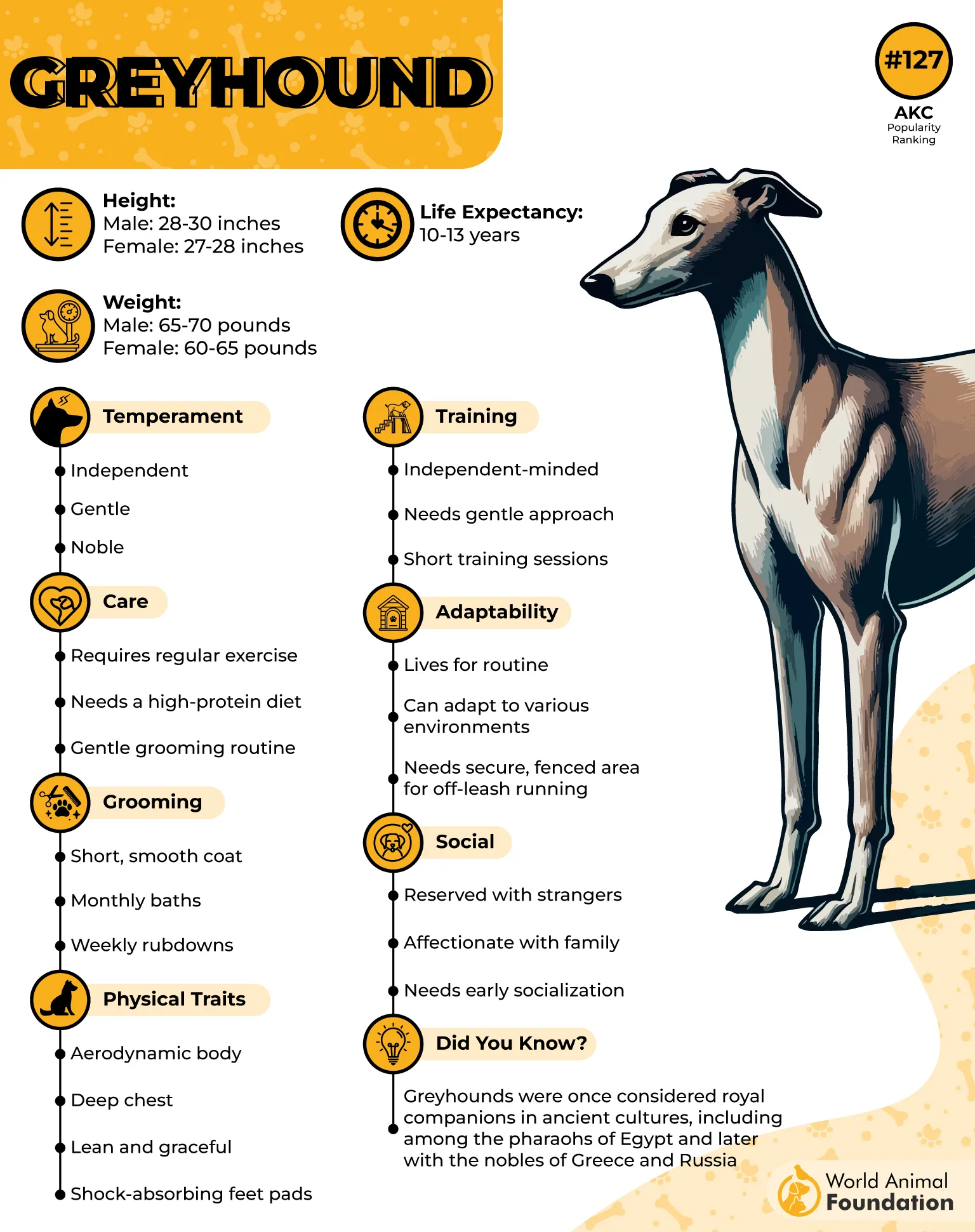
Their long nose gives them a refined, sculpted look. It also enhances their awareness outdoors by helping them process scents more efficiently. This structure plays a major role in their hunting and racing history.
Greyhounds typically do well with simple exercise routines. Short bursts of speed followed by rest suit them perfectly. They’re the definition of sprint-and-snooze dogs.
Their soft personalities make them affectionate and sensitive to their families. Greyhounds tend to form relaxed, trusting bonds with the people they live with. They fit comfortably into both active and peaceful homes.
Fun Fact
Greyhounds can reach speeds of up to 45 miles per hour, so they are one of the fastest animals in the dog world.
7. Bloodhound
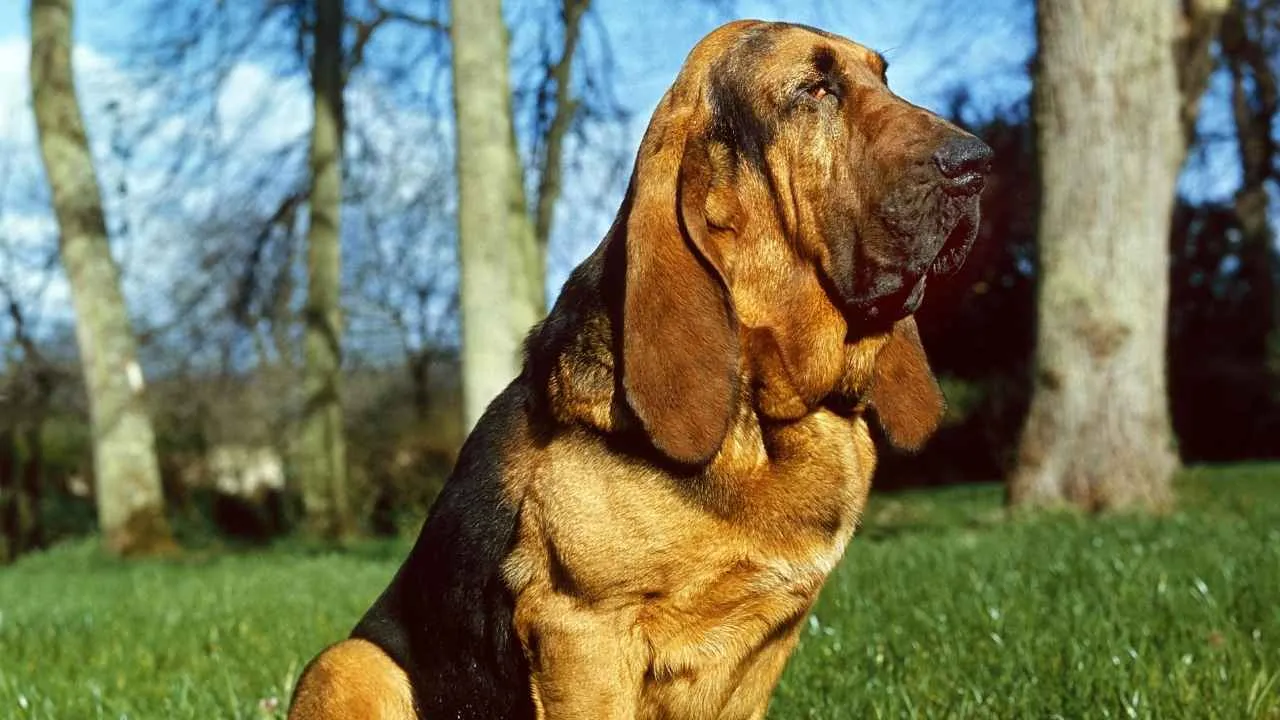
The Bloodhound is famous for its impressively long nose and outstanding sense of smell. Its roomy nasal passages allow it to process scents more deeply than most breeds. This natural talent has earned it an important role in tracking work.
Bloodhounds have loose skin, long ears, and a thoughtful expression. Their calm, steady presence often surprises those who expect a more intense tracking dog. They are typically gentle with families and other pets.

Their long muzzle gives them extra space for scent receptors. The combination of a long snout, droopy ears, and wrinkled skin helps trap scent particles as they move. This anatomical design is what makes them unmatched scent trackers.
They enjoy steady exercise, especially long walks where they can sniff and explore. Their minds stay sharp when given opportunities to follow trails. They thrive when allowed to use their natural abilities.
Bloodhounds are affectionate and loyal, often forming deep attachments to their families. When they catch a scent, however, their focus becomes incredibly strong. Structured training and secure outdoor spaces help keep them safe.
Fun Fact
A Bloodhound’s sense of smell is so reliable that its tracking results have been accepted as evidence in court.
8. Borzoi

The Borzoi is a tall, elegant sighthound with a smooth, graceful stride. Its long, narrow nose enhances airflow during high-speed pursuits. This characteristic helped the breed excel in its early role as a wolf-hunting dog in Russia.
Borzoi dogs move with an effortless, floating style. Despite their size, they are calm and gentle indoors. Their peaceful temperament makes them lovely companions in quiet homes.
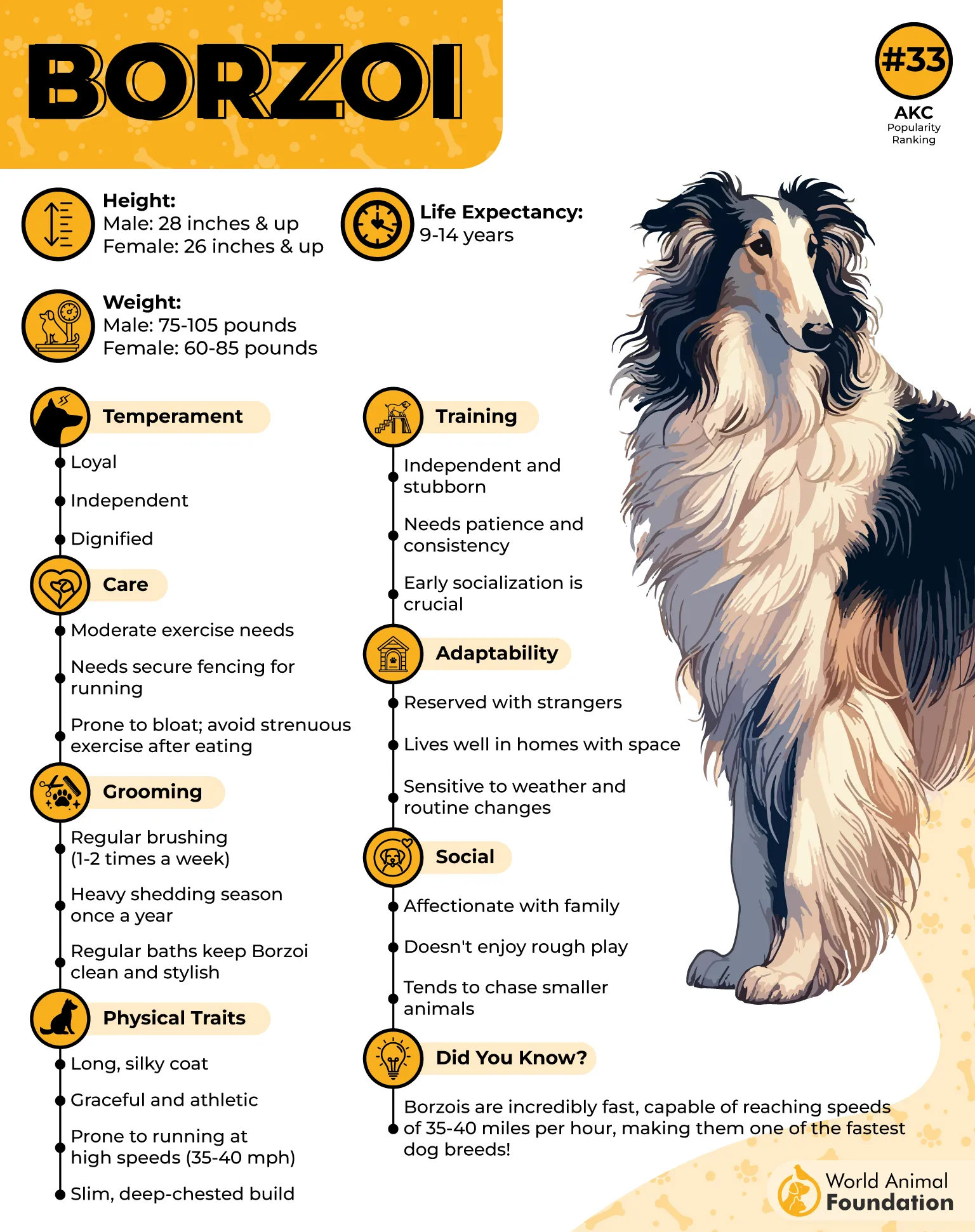
Their elongated muzzle is one of their most defining features. It contributes to their ability to sense movement and scents across open fields. The combination of nose shape and speed makes them impressive hunters.
Even though they love running, they are quite mellow once inside. Many Borzoi enjoy soft beds and serene environments. They balance bursts of energy with long rest periods.
This breed tends to bond closely with its family. Borzoi respond well to soft, patient guidance and appreciate predictable routines. Their blend of grace and sensitivity sets them apart from many large breeds.
Fun Fact
In Russia, Borzoi were historically given as royal gifts to nobility, highlighting their status and beauty.
9. Dachshund
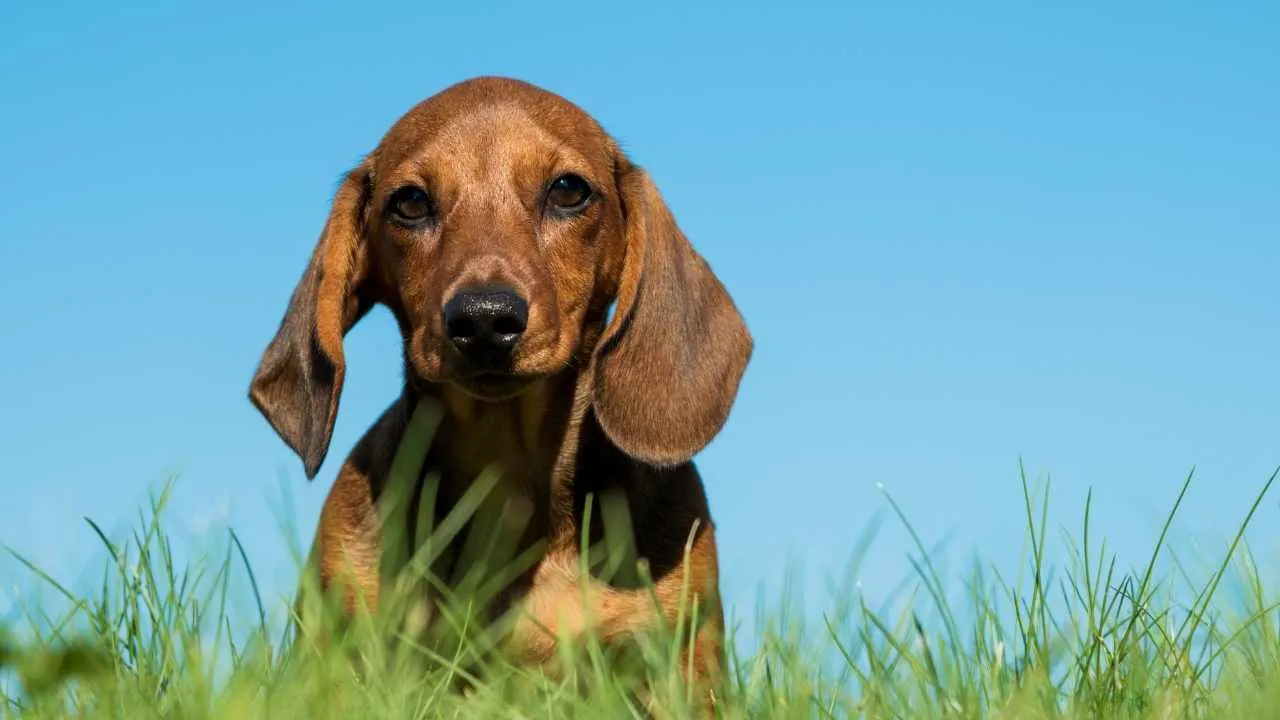
The Dachshund is instantly recognizable thanks to its long body, short legs, and elongated muzzle. Its nose helps it track scents underground, where it originally hunted badgers. This long-snouted design gives it surprising scenting power for its size.
Dachshunds come in a variety of coat types, each offering its own charm. Their expressive eyes and bold spirit make them unforgettable. They are often braver than their size suggests.
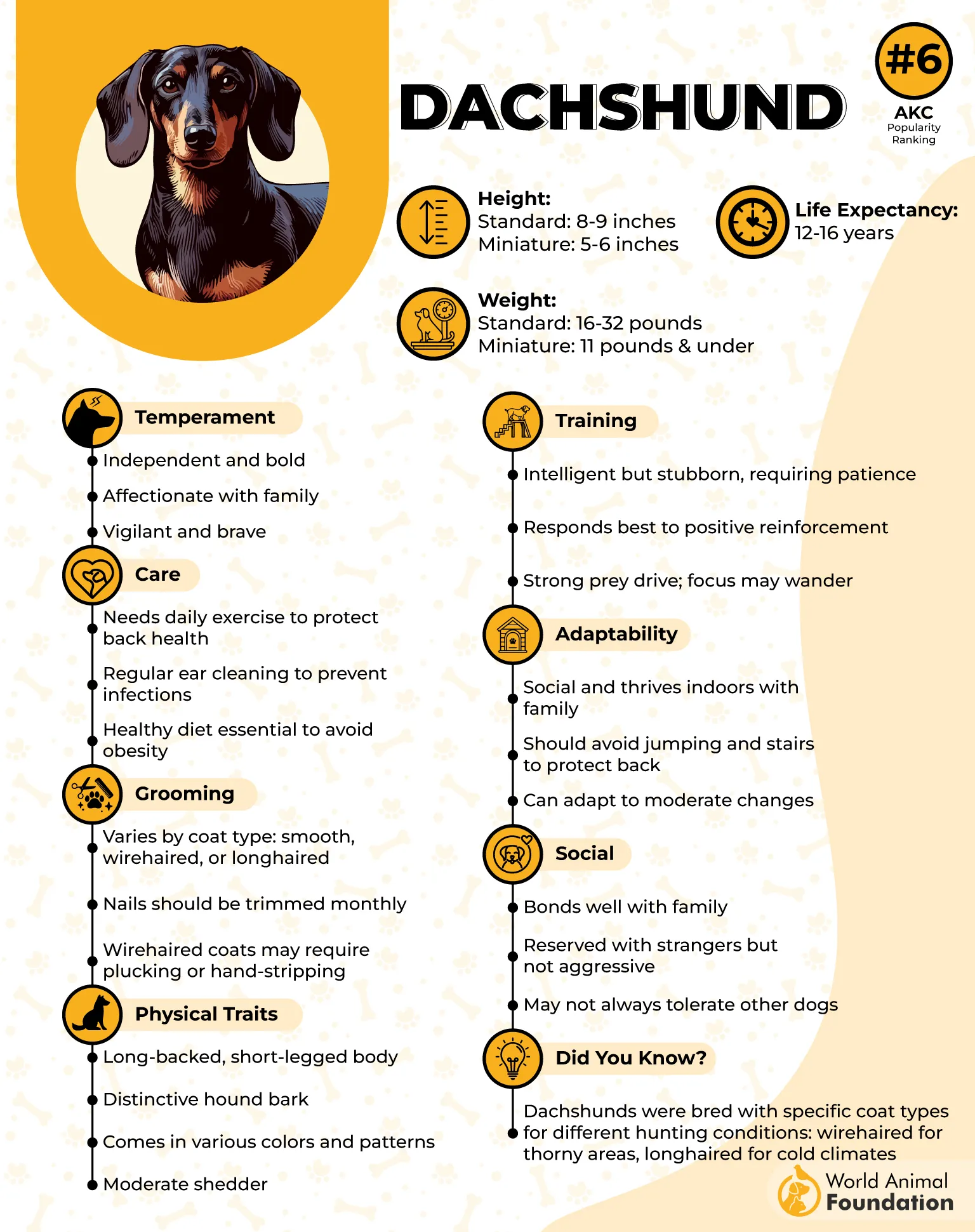
Their long nose enhances their natural curiosity. They love exploring, sniffing, and following interesting trails. This makes scent-based games especially engaging for them.
Daily activity for Dachshunds can be simple but intentional. Walks, play sessions, and mental puzzles keep them sharp. Their hunting history means they enjoy challenges that stimulate both mind and body.
These dogs form strong bonds with their families and enjoy being included in everyday life. With gentle training, they learn quickly and adapt well. Their mix of playfulness and determination makes them beloved companions.
Fun Fact
The Dachshund’s name means “badger dog” in German, reflecting its remarkable underground hunting origins.
10. German Shepherd

The German Shepherd is known for its intelligence, confidence, and strong working abilities. Its long muzzle helps enhance airflow and scent detection. This structure contributes to its success in police, search-and-rescue, and service roles.
German Shepherds enjoy purposeful activity and mental engagement. They thrive in homes that offer structure and daily challenges. Their eagerness to learn makes them adaptable to many tasks.
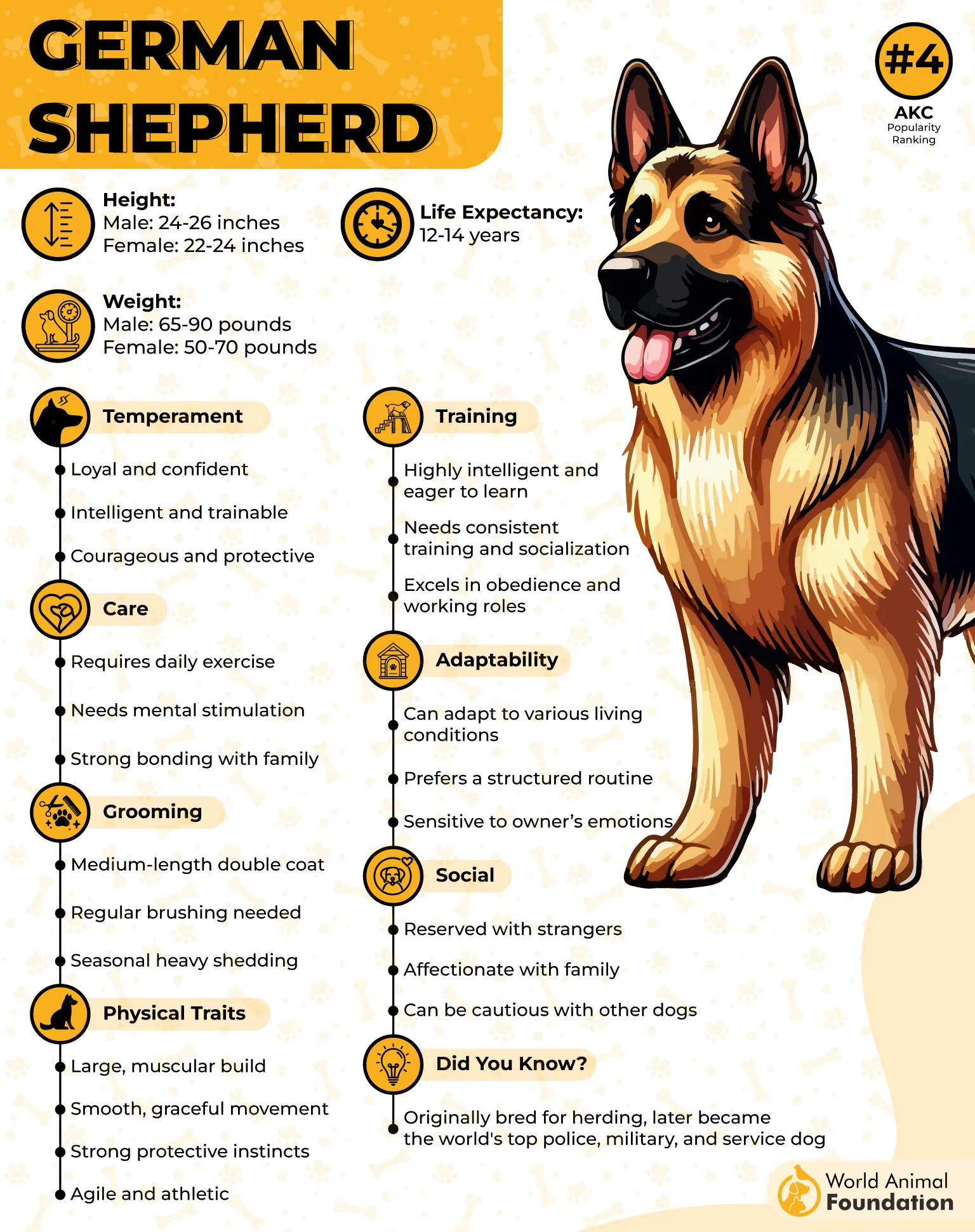
Their long nose gives them a powerful sense of smell. This ability supports tracking, detection work, and protective tasks. It’s a key part of what makes the breed so versatile.
They need consistent exercise to stay healthy and content. Walks, training sessions, and working-style games help them stay focused. This supports their balanced, confident nature.
German Shepherds build deep, trusting relationships with their families. They appreciate clear guidance and thrive when they feel they have a job. Their loyalty and responsiveness make them a favourite in many environments.
Fun Fact
A German Shepherd named Rin Tin Tin became one of Hollywood’s first canine stars, boosting the breed’s popularity worldwide.
FAQs
Why are some dog noses flat while others are long and narrow?
Flat noses and elongated noses come from targeted breeding based on a breed’s original purpose. Long-snouted dogs often needed a long face or slender build to hunt or detect scents, while flat-faced breeds were originally bred for companionship.
Does a dog’s nose shape affect its sense of smell?
Yes. The bigger the nose, the more scent-detecting cells and olfactory receptors it can hold, which boosts scenting ability. Long, narrow noses generally support an incredible sense of smell compared to shorter ones.
Can a dog’s nose shape affect its health or breathing?
Flat-faced dogs can experience respiratory problems, especially in extreme heat. Long-nosed breeds typically breathe more easily but may face other health issues depending on their activity level and build.
Conclusion
Dog nose shapes play a major role in how dogs explore the world, from long snouted dogs with elongated noses built to detect scents to flat-faced, affectionate dogs that bond closely with their favorite humans.
These differences come from a long history of targeted breeding, shaping everything from scenting ability to how well a canine companion handles daily exercise, interactive toys, or puzzle toys. Long-faced racing dogs with low body fat and a lean build often make great hiking buddy options for active families, while floppy ears, pointy ears, curly coats, or long hair add even more variety across breeds.
Other dog breeds, such as the Afghan Hound, Italian Greyhound, Pharaoh Hound, Bull Terrier, Ibizan Hound, Airedale Terrier, Russian Wolfhound, and many rare breed types, show how dogs with long or short noses each bring something unique to pet parents.


